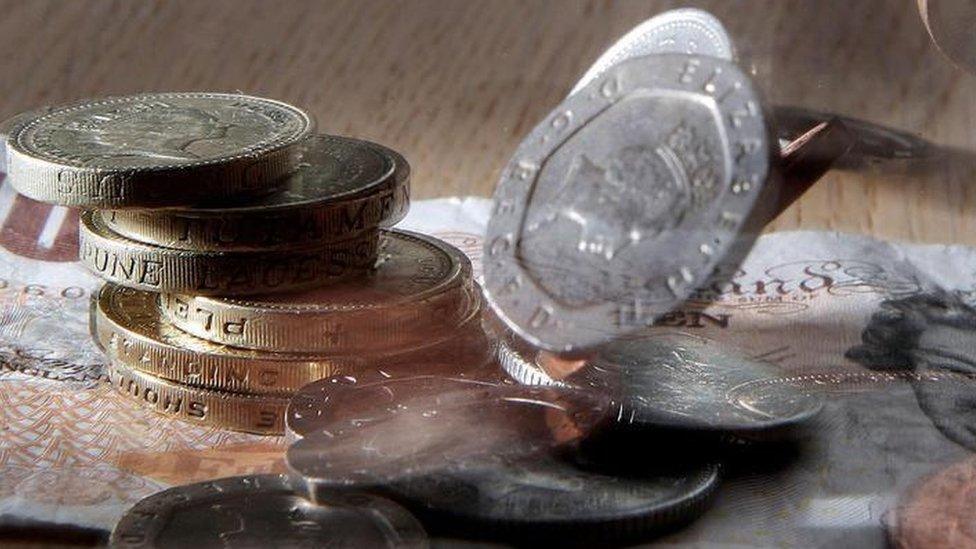More going bust as personal borrowing surges
- Published

The number of people declared insolvent owing to unmanageable debts was 13% higher in 2016 compared with the previous year, official figures show.
A total of 90,930 people in England and Wales found themselves in that situation, the Insolvency Service said.
However, the numbers, although rising, remain well below the peak level of insolvencies reached in 2010.
The head of the Bank of England warned recently that "vigilance" was needed over rising levels of debt.
'Tide has turned'
Insolvencies in England and Wales were lower in 2016 than in any year from 2006 to 2014.
They also fell towards the end of the year - dropping by 4.3% in the fourth quarter compared with the previous three months.
In Scotland, which operates under a separate system, personal insolvencies rose by 7.9% in the final three months of the year compared with the previous quarter.
These insolvencies, which include bankruptcies and protected trust deeds, totalled 2,616, according to Accountant in Bankruptcy - Scotland's insolvency service. Those in debt also have the option of an official debt payment programme, which avoids insolvency.
The figures come after Bank of England governor Mark Carney warned of a "shift" in the levels of personal unsecured borrowing, which is rising at its fastest rate for a decade.
Mark Sands, personal insolvency partner at consultancy RSM, said: "In 2015 we saw the lowest levels of personal insolvency in over a decade, but the latest figures for 2016 show that the tide has now turned.
"Despite record low interest rates and high employment levels during the year, many more people found that they could no longer keep on top of their debts.
"The Bank of England has recently warned of 'ballooning levels of household debt' which are being driven by historic low rates. This is increasing the risk that some borrowers will bite off more than they can chew. As a result, we expect to see levels of personal insolvency rise throughout 2017."
Clickable bankruptcy
There are a number of ways in which someone with out-of-control debts can declare themselves insolvent.
The rise in insolvencies in 2016 was still primarily the result of Individual Voluntary Arrangements, an official deal - overseen by an insolvency practitioner - that sees steady payments made from an individual to creditors over five years.
Other options for those with unmanageable debts include bankruptcy. This is regarded as the most recognised form of insolvency by the public, and has just seen the biggest overhaul in its rules for 30 years.
A new system in England and Wales means bankruptcy applications are made online, external, without the need to go to court.
The shift from court to internet, introduced in April, was in part an attempt to eliminate that perceived stigma.
This pushed up the number of people in debt choosing bankruptcy in the latter half of 2016.

Bankruptcy and alternatives

Bankruptcy: The traditional way of escaping overwhelming debt. Ends after one year, but there is a possibility you may lose your assets, including your house, to pay something to the creditors. Since April, applications can be made online and considered by an adjudicator. Costs £680
Individual Voluntary Arrangement (IVA): A deal between you and your creditors, overseen by an insolvency practitioner. Less chance of losing your home, but involves paying some of your debts in one go
Debt Relief Orders: Introduced in April 2009, these allow people with debts of less than £15,000 (£20,000 since October 2015) and minimal assets to write off debts without a full-blown bankruptcy
